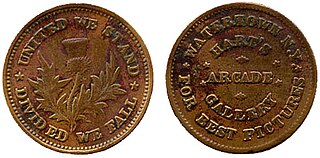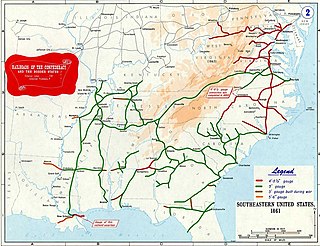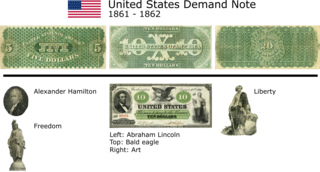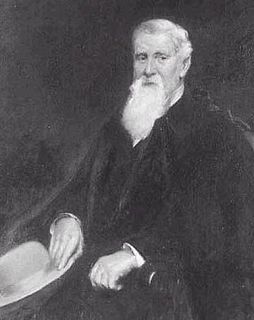 W
WThe Antebellum South was a period in the history of the Southern United States from the late 18th century until the start of the American Civil War in 1861. This period in the South's history was marked by the economic growth of the region, largely due to its heavy reliance on slavery, and of its political influence on the U.S. federal government. It was also characterized by the rise of abolition and the gradual polarization of the country between abolitionists and supporters of slavery.
 W
WThe blockade runners of the American Civil War were seagoing steam ships that were used to get through the Union blockade that extended some 3,500 miles (5,600 km) along the Atlantic and Gulf of Mexico coastlines and the lower Mississippi River. The Confederate states were largely without industrial capability and could not provide the quantity of arms and other supplies needed to fight against the industrial north. Blockade runners built in Scotland and England met this need and imported the guns, ordnance and other supplies that the Confederacy desperately needed, in exchange for cotton that the British textile industry likewise was in desperate need of. To get through the blockade, these ships, built in British ship yards and specially designed for speed, had to cruise undetected, usually at night, through the Union blockade. The typical blockade runners were privately owned vessels often operating with a letter of marque issued by the Confederate States of America. If spotted, the blockade runners would attempt to outmaneuver or simply outrun any Union ships on blockade patrol, very often successfully.
 W
WCivil War tokens are token coins that were privately minted and distributed in the United States between 1861 and 1864. They were used mainly in the Northeast and Midwest. The widespread use of the tokens was a result of the scarcity of government-issued cents during the Civil War.
 W
WThe American Civil War was the first in which large armies depended heavily on railroads to bring supplies. For the Confederate States Army, the system was fragile and was designed for short hauls of cotton to the nearest river or ocean port. During the war, new parts were hard to obtain, and the system deteriorated from overuse, lack of maintenance, and systematic destruction by Union raiders.
 W
WThe Confederate States dollar was first issued just before the outbreak of the American Civil War by the newly formed Confederacy. It was not backed by hard assets, but simply by a promise to pay the bearer after the war, on the prospect of Southern victory and independence. As the Civil War progressed and victory of the South seemed less and less likely, its value declined. After the Confederacy's defeat, its money had no value, and both individuals and banks lost large sums.
 W
WConfederate war finance involved the various means, fiscal and monetary, through which the Confederate States of America financed its war effort during the American Civil War of 1861-1865. As the war lasted for nearly the entire existence of the Confederacy, military considerations dominated national finance.
 W
WA Demand Note is a type of United States paper money that was issued between August 1861 and April 1862 during the American Civil War in denominations of 5, 10, and 20 US$. Demand Notes were the first issue of paper money by the United States that achieved wide circulation and they are still in circulation today, though they are now extremely rare. The U.S. government placed the Demand Notes into circulation by using them to pay expenses incurred during the Civil War including the salaries of its workers and military personnel.
 W
WGreenbacks were paper currency issued by the United States during the American Civil War. They were in two forms: Demand Notes, issued in 1861–1862, and United States Notes issued in 1862–1865. They were legal tender by law, but were not backed by gold or silver, only the credibility of the U.S. government.
 W
WJay Cooke & Company was a U.S. bank that operated from 1861 to 1873. Headquartered in Philadelphia, Pennsylvania, with branches in New York City and Washington, D.C., the bank helped underwrite the Union Civil War effort. It was the first "wire" brokerage house, pioneering the use of telegraph messages to confirm securities transactions with clients. The bank became overextended in the building of the Northern Pacific Railway and failed, contributing to the Panic of 1873.
 W
WThe Lancashire Cotton Famine, also known as the Cotton Famine or the Cotton Panic (1861–65), was a depression in the textile industry of North West England, brought about by overproduction in a time of contracting world markets. It coincided with the interruption of baled cotton imports caused by the American Civil War and speculators buying up new stock for storage in the shipping warehouses at the entrepôt.
 W
WThe Memphis and Charleston Railroad, completed in 1857, was the first railroad in the United States to link the Atlantic Ocean with the Mississippi River. Chartered in 1846, the 311 miles (501 km) 5 ft gauge railroad ran from Memphis, Tennessee to Stevenson, Alabama through the towns of Corinth, Mississippi and Huntsville, Alabama. The portion between Memphis and LaGrange, Tennessee was originally to be part of the LaGrange and Memphis Railroad, chartered in 1838. From Stevenson, the road was connected to Chattanooga, Tennessee via the Nashville and Chattanooga Railroad. In Alabama, the railroad followed the route of the Tuscumbia, Courtland and Decatur Railroad between Tuscumbia and Decatur, the first railroad to be built west of the Appalachian Mountains.
 W
WSalt was a crucial resource during the American Civil War. Salt not only preserved food in the days before refrigeration, but was also vital in the curing of leather. Union general William Tecumseh Sherman once said that "salt is eminently contraband", as an army that has salt can adequately feed its men.
 W
WSlavery in the United States was the legal institution of human chattel enslavement, primarily of Africans and African Americans, that existed in the United States of America from its founding in 1776 until passage of the Thirteenth Amendment in 1865. Slavery was established throughout European colonization in the Americas. From early colonial days, it was practiced in Britain's colonies, including the Thirteen Colonies which formed the United States. Under the law, an enslaved person was treated as property and could be bought, sold, or given away. Slavery lasted in about half of U.S. states until 1865. As an economic system, slavery was largely replaced by sharecropping and convict leasing.